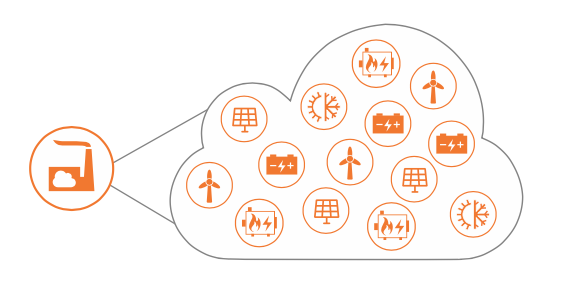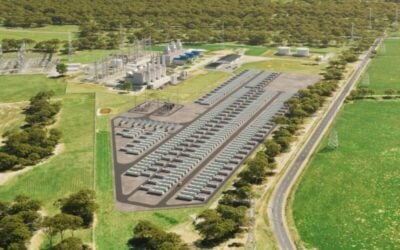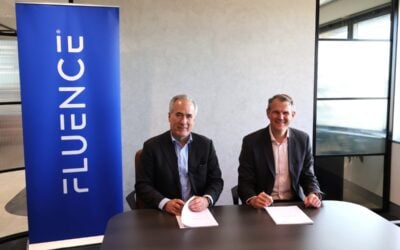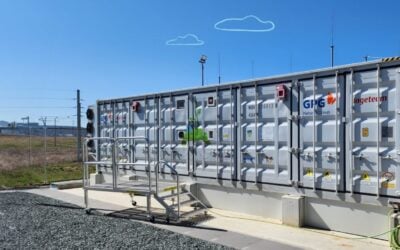
Two US companies with technology platforms to enable customer-sited energy resources including battery storage to provide capacity and balancing services to the electricity grid have between them raised US$117 million in newly-announced funding.
AutoGrid has raised US$83.5 million in funding to scale up its virtual power plant (VPP) platform for distributed energy resources (DER) and Leap has raised US$33.5 million to scale and develop its DER software solution.
Enjoy 12 months of exclusive analysis
- Regular insight and analysis of the industry’s biggest developments
- In-depth interviews with the industry’s leading figures
- Annual digital subscription to the PV Tech Power journal
- Discounts on Solar Media’s portfolio of events, in-person and virtual
“From the day we were founded, we have been obsessed with making our energy systems smarter in our quest to decarbonise our society. This funding will accelerate our vision of making AI-powered virtual power plants accessible to everyone as a key tool in catalysing the world’s transition to sustainable energy,” AutoGrid CEO Amit Narayan said.
AutoGrid’s platform, Flex, can take spare capacity from batteries, electric vehicles (EVs) and flexible load assets to help smooth out short-term imbalances in supply and demand on the electric grid, imbalances which only become more pronounced as the amount of variable renewable energy on the network increases.
Crucially to the business model for AutoGrid and other VPP providers’ technologies, the home and business owners that host those distributed resources can be financially rewarded for letting utilities or network operators benefit from utilising them.
AutoGrid is currently managing more than 5,000MW of VPPs across 15 countries. In September, the company partnered with US residential solar provider Sunnova to use Flex for demand response that California community energy supplier Clean Power Alliance needs, while another leading residential solar company, Sunrun, also uses AutoGrid’s software.
In July a partnership with school bus company Zum was announced which could turn electric school buses into VPP resources. In Japan, Fujitsu is marketing the AutoGrid VPP.
The new Series D-2 funding round AutoGrid has just completed will be used for “general corporate purposes” which will advance the brand’s global expansion and implement its technology roadmap. Some of it will also be used to buy back equity from existing shareholders.
Investors in the round include some notable names: Schneider Electric’s VC fund SE Ventures, solar tech company SolarEdge, Microsoft, National Grid Partners and Shell Ventures were among them.
“AutoGrid has proven its ability to deploy new capabilities at a global scale. We invested because they have one of the best utility-focused AI teams in Silicon Valley and a broad platform to help utilities enable a smarter energy future,” National Grid CTO and innovation officer Lisa Lambert, who is also founder and president of National Grid Partners, said.

Leap’s platform manages equivalent of two peaker plants already
One of the key value propositions for AutoGrid is that its VPP platform can be used to mitigate the impact of peak demand on electric grids, which is commonly met with peaker plants which come with associated capital investment, fuel and environmental costs, being usually run on gas, or other fossil fuels like heavy fuel oil or kerosene.
Also helping to fill that gap is Leap’s technology. In June Energy-Storage.news reported that the company was preparing to put up to 288MW of flexible power onto California’s grid in time for the summer peaks that threaten the state’s energy security on an annual basis.
After the fact, Leap now says that it reached 215MW under management and dispatched 375MWh from more than 10,000 commercial and residential sites during the heat wave California experienced in June.
Any cloud-connected and automated smart energy technologies can be used on the Leap platform, from battery storage to thermostats, EV chargers and more. The company has strategic partnerships in place with the likes of commercial and industrial (C&I) energy storage provider Stem Inc and, again, Sunrun.
Leap has raised its US$33.5 million of new debt funding and equity finance in a Series B funding round led by California investment management firm Park West Asset Management, along with other names that again, like AutoGrid, included National Grid Partners. The debt portion of the funding came from Silicon Valley Bank.
The fresh funding will be used to scale up and develop Leap’s platform, with the company citing a growing demand for grid services in North America and international territories that it can respond to.
“As the grid transitions to renewable energy and incorporates more smart devices, flexible capacity is essential to balance power grids,” Leap co-founder and CEO Thomas Folker said, adding that the company’s network has already added enough flexible capacity to California’s grid to equal two fossil fuel peaker plants.
“The pressure to leverage DERs to bolster grid resiliency is amplified by the increased frequency and severity of extreme weather events,” investor Park West’s portfolio manager Tony Bartsh said.
“Leap’s software solution effectively integrates DERs into energy markets to not only provide value back to the grid when it is needed most, but also enable new revenue streams — a win-win for grid operators, service and technology providers, and the environment alike.”
While customer acquisition and building scale has been the main sticking point for VPPs so far, regulatory changes to accommodate their use are gradually being introduced. In the US, FERC Order 2222 from the Federal Energy Regulatory Commission commands grid and electricity market operators to allow DERs to participate in wholesale markets without barriers is expected to be a game changer, if it can be implemented successfully.






